Interior Designing and Interior Styling
What is Interior Design?
In my opinion, designing a space entails influencing the experience that a user will have there. An experience that will undoubtedly impact their emotions as well as their life. A project called interior design establishes how a room will work, how it will look, and how it will appeal to the senses. It should suit the inhabitants’ requirements, cultures, and way of life.
It is important to look for professional assistance so that the design is well-thought-out and attends to all the details; for the space to function and feel complete, the acoustics, the surroundings, the positioning, and use of color all need to be taken into account. The way we inhabit a space has a significant impact on our creativity, happiness, and, of course, our well-being.
For Free, Demo classes Call: 020 71171757
Registration Link: Click Here!
It’s essential to plan every aspect of every livable area with a specific goal in mind (eating, exercising, relaxing). A room for dining is different from a room for relaxing or a room for gathering. In order to do this, we focus on the following important parts:
Space:
Space is a fundamental concept to understand as the foundation of an interior, ensuring you’re most equipped to take advantage of what’s available to you. The available’ space’ is rarely easily modified (though a designer may have the luxury of doing so on occasion), so you must work with what you have within the actual constraints of the room. Are you looking to enhance your creativity and skills in interior design? Look no further than Interior Design Classes in Pune!
We have the privilege of working in three dimensions in interior design (length, width, and height).
This three-dimensional space can be filled or left empty based on your needs in both function and design.
Positive and negative space are the two types of space. Positive space contains items, whereas negative space is open/empty space (including any space between objects). To avoid overcrowding or, on the other end of the spectrum, sparseness, a room’s negative and positive areas must be balanced.
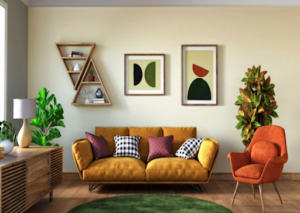
Line:
Horizontal, vertical, and dynamic lines all help to form and direct the eye in a room. Using the furnishings and structural design of the room to create lines can create harmony, unity, and contrast.
Interior designers should try to establish a balance by incorporating contrasting lines. This is often accomplished by picking one dominating feature line in accordance with the client’s brief and the desired feeling in the space.
Form:
The shape of the room, as well as any objects within it, are examples of the form. In other words, it refers to the actual form of any three-dimensional object.
Forms are typically classified as geometric or natural. Geometric refers to sharp lines and square edges that appear man-made, whereas natural refers to more organic forms that appear to have been generated by nature. Forms can alternatively be open – looking into objects – or closed – self-contained.
For Free, Demo classes Call: 020 71171757
Registration Link: Click Here!
Color:
This affects the feelings of the individual entering the space. Colors like blue, green, and purple are calming and encourage introspection. Red, magenta, and yellow are upbeat and joyful colors. White and beige are associated with focus, purity, and simplicity. Pink conveys purity, confidence, and optimism.
Consider what the room will be used for and the activities that will take place in that space before deciding on a color. Second, examine how natural and artificial lighting will affect your chosen color during the day and night, as light can modify our perception of color. Finally, think about the size of the room. Interior designers frequently use lighter or brighter colors in tiny spaces to create a sense of more space. Darker colors can give a larger area a dramatic dimension.
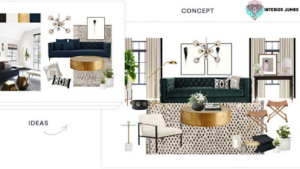
Lighting:
This creates the atmosphere and aids in the fulfillment of the space’s goals.
Light has the capacity to define the mood and atmosphere of a space by shaping color, line, and texture in addition to its utilitarian purpose. Furthermore, any skilled interior designer understands that lighting fixtures are a visual component in and of itself, and may add the appropriate flair to any design.
Our Interior Design Course in Pune is designed to be flexible and accessible, with multiple scheduling options to fit your busy lifestyle. And with our emphasis on practical, real-world experience, you’ll graduate with the knowledge and confidence you need to pursue a successful career in interior design.
Consider what the room will be used for and the activities that will take place in that space before deciding on a color. Second, examine how natural and artificial lighting will affect your chosen color during the day and night, as light can modify our perception of color. Finally, think about the size of the room. Interior designers frequently use lighter or brighter colors in tiny spaces to create a sense of more space. Darker colors can give a larger area a dramatic dimension.
Acoustics:
The acoustics should be appropriate for the way of life and the activities taking place in the area. A hotel and a library are not the same things.
Common responsibilities in this profession (Interior Designer) may include:
- creating the walls and flooring of a space
- creating a room design, style, and mood ideas
- Choosing color schemes and finding fixtures and furniture while
- according to a client’s vision
- collaborating with architects to design an interior environment
- design for use and functionality
- creating designs that are compatible with architectural plans
- client consultation and design briefs
- Guaranteeing that all work falls within the client’s budget by creating design drawings with computer applications such as AutoCAD
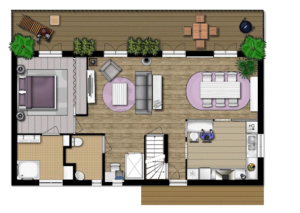
What is the future of interior design?
I believe that spaces should be more sustainable and focused on human well-being. We’re seeing a wellness trend in current culture, which will be crucial when it comes to design. I also believe that interior design is getting more pared-down and minimalist. People nowadays are less interested in possessing a lot of material stuff, therefore we have fewer items but they are more carefully picked.
What is interior styling?
Interior style is frequently the final stage of a residential or commercial project after the interior design phase. It entails giving a room or place the finishing touches that complete the desired look and feel and bring its furniture to life. Interior design can benefit a variety of areas. They can include a television set, a manufacturer’s showroom, or a single room in a person’s home.
Interior styling’s fundamental areas often include:
Furnishings: Adding new or improving existing furnishings is a common part of interior styling. These furnishings could include chairs, tables, and drawers, as well as soft furnishings such as cushions, carpets, and blankets.
Layouts: With some modification, a room’s layout can make the best use of the available space for both functioning and traffic flow. This could involve, for instance, switching out a U-shaped couch for an L-shaped couch and positioning it against a different wall to alter the overall mood and flow of the space.
Colors: A color palette is a crucial component of interior styling since it offers a variety of suitable hues to choose from when selecting wall paint, fabric colors, and decorations. A color palette may include neutral tones or bold and striking tones, depending on the goals and requirements of the styling project.
Textures: When combined with other design components, textures may provide depth and intrigue to a space and have a big impact on how it feels. For instance, because they reflect light and feel silky to the touch, smooth textures can produce a cool, spacious atmosphere.
Lighting: A room’s lighting can significantly affect its use, ambiance, and apparent size. It can also have an impact on people’s emotions. For instance, bright lights might evoke feelings of vigor, whilst dark lights can evoke thoughts of serenity.
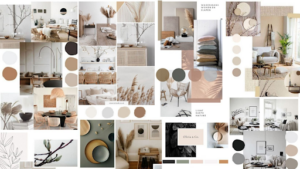
Common responsibilities in this profession (Interior decorator) may include:
- examining a client’s property and taking measurements
- selling home decor items to customers in a retail setting
- advising clients on color, layout, furniture, floor coverings, curtains, wallpaper, paint, and blinds
- presenting design concepts to clients
- Design drawings are created using computer tools such as AutoCAD or Photoshop.
- overseeing subcontractors and organizing the installation and placement of furniture and
- picking material providers while staying within the client’s budget
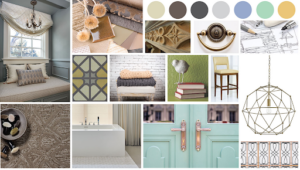
Most Popular Interior Design Styles
Bohemian
Contemporary
Farmhouse
French Country
Industrial
Mid-Century Modern
Nautical
Rustic
Traditional
Scandinavian
Shabby Chic
Urban Modern
For Free, Demo classes Call: 020 71171757
Registration Link: Click Here!
What are the differences between architecture, interior design, and styling?
Interior design requires skill. The designer will need to have obtained professional training, improved their global and more conceptual project development skills, and completed it. They must be able to figure out the specifics and many components, including systems, vertical and horizontal surfaces, and illumination.
Whether you’re a beginner or an experienced designer looking to enhance your skills, our Interior Design Training in Pune is the perfect choice for you. So why wait? Enroll today and start your journey toward a rewarding career in interior design!
The architecture incorporates interior design, although it is mainly concerned with the aesthetics of the building’s façade and the structural integrity. It is considered an art form since it reflects the cityscape. Nature is the ultimate in beauty, but there is no untouched nature in cities. It is no longer a main point. That is why the beauty of an urban landscape is determined by how we construct and build cities.
Furniture and embellishment are examples of styling.
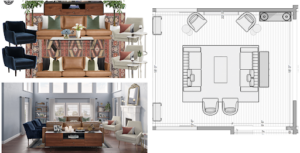
Author:-
© Copyright 2021 | Sevenmentor Pvt Ltd.
Call the Trainer and Book your free demo Class for Interior Designing Call now!!!
| SevenMentor Pvt Ltd.

